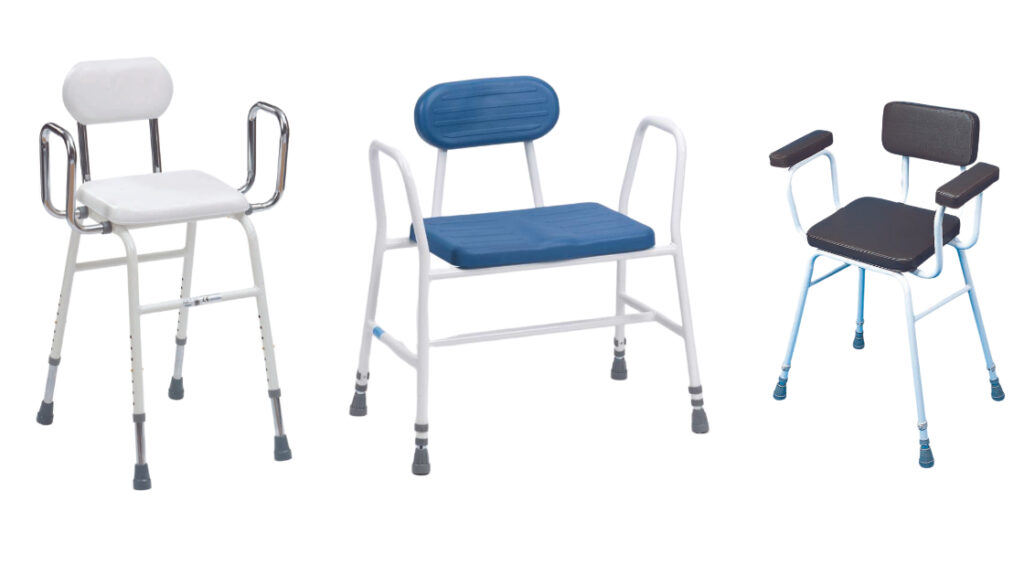A perching stool is a type of chair that is designed to provide a comfortable and supportive seating option for tasks that require a person to be at a height higher than a standard chair. Perching stools often have a seat that is angled slightly forward to help promote good posture and ease of standing, and they may have armrests or backrests for added support. They are typically adjustable in height and may have a padded seat for added comfort. Perching stools are often used in kitchen or bathroom settings, and they can be a useful tool for people who have difficulty standing for long periods of time or have mobility challenges.
Table of Contents
Different types of perching stools
There are several different types of perching stools available on the market, including:
- Adjustable stools: These stools can be adjusted to different heights to suit the user's needs and preferences.
- Padded stools: These stools have a cushioned seat and backrest for added comfort.
- Swivel stools: These stools have a base that allows them to rotate, which can be useful for reaching items on a counter or work surface.
- Stools with arms: Some perching stools come with armrests, which can provide additional support and comfort.
- Stools with backrests: These stools have a supportive backrest to help keep you comfortable and upright.
- Stools with footrests: Perching stools typically come with footrests to support the feet and lower legs. Some stools have adjustable footrests to accommodate different leg lengths.
- Stools with wheels: These stools have casters or wheels on the base, which can make them easier to move around.
When choosing a perching stool, consider your needs and preferences, as well as the intended use of the stool. This will help you find the best option for you.
Benefits of perching stools
Perching stools can offer a number of benefits, including:
- Improved posture: Perching stools encourage users to sit up straight, which can help improve posture and reduce strain on the back and neck.
- Better circulation: Sitting on a perching stool with your feet on the footrests can help improve circulation, as it allows blood to flow more easily through the lower legs.
- Increased comfort: Perching stools can be more comfortable than traditional chairs for some people, as they allow you to sit at a comfortable height while still providing support for your feet and lower legs.
- Flexibility: Perching stools are designed to be used in a variety of settings, such as at a workstation, in a kitchen, or at a bar. They can be easily moved and adjusted to suit your needs.
- Health benefits: Some studies have suggested that sitting on a perched stool can help reduce the risk of certain health problems, such as obesity, diabetes, and heart disease.
Overall, perching stools can be a useful and comfortable seating option for a wide range of individuals and activities.
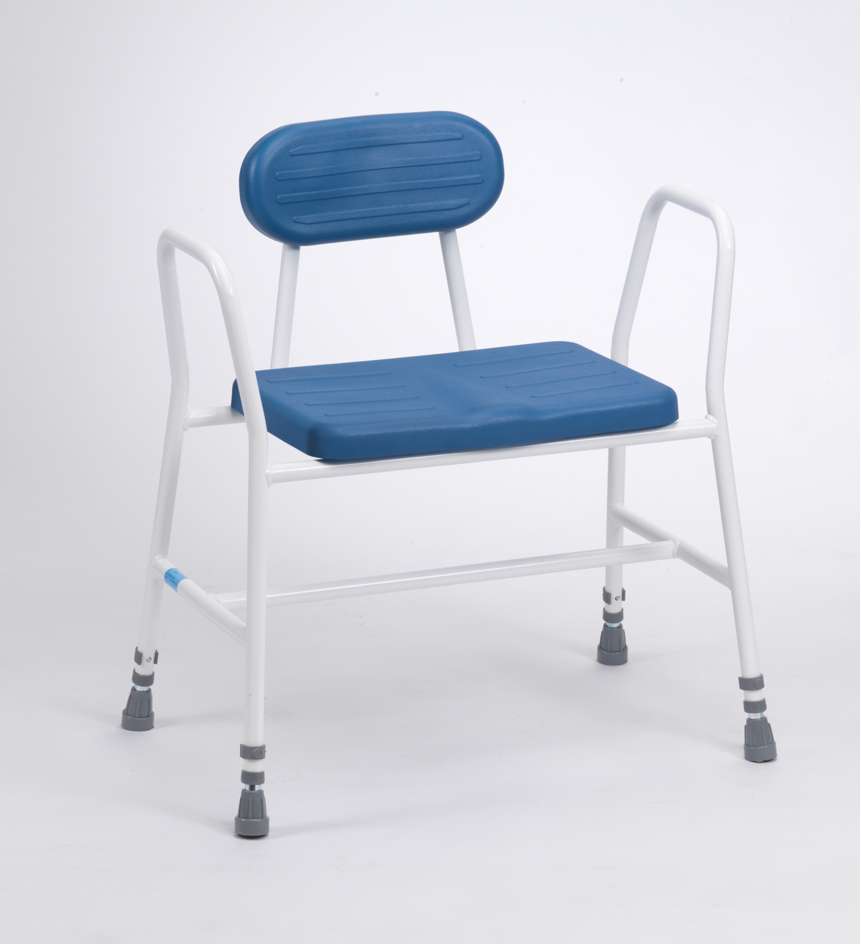
What is a perching stool used for?
A perching stool is typically used as a seat in situations where a person needs to sit for an extended period of time, but may not want to sit fully upright in a chair. It is designed to allow the user to sit in a semi-upright position, with their feet resting on a footrest and their upper body supported by a backrest. Perching stools may be used in a variety of settings, including offices, hospitals, clinics, and other medical facilities. They may also be used by individuals who have mobility issues or other physical challenges that make it difficult to sit in a traditional chair. In general, perching stools are used to provide a comfortable and supportive seating option for people who need to sit for long periods of time.
What does a perching stool look like?
A perching stool is a type of seat that is designed to allow the user to sit in a semi-upright position, with their feet resting on a footrest and their upper body supported by a backrest. It is typically used in situations where a person needs to sit for an extended period of time, but may not want to sit fully upright in a chair.
Perching stools can come in a variety of styles and designs, but they generally have the following features:
- A sloping seat: The seat is sloped downward slightly, allowing the user to sit in a semi-upright position with their feet resting on a footrest.
- Adjustable height: Perching stools are typically adjustable in height, allowing the user to set the stool to the most comfortable and supportive height for their needs.
- Splayed legs: Perching stools have a splayed base, with the legs spread out wider than a standard stool to provide stability.
- Footrest: Perching stools have a footrest for the user to rest their feet on while sitting.
- Backrest: Some perching stools have a backrest to provide additional support to the upper body.
- Armrests: Some perching stools have armrests, which can be helpful for guiding the user to sit in a midline position and for support when standing up from the stool.
Overall, a perching stool typically looks like a combination of a stool and a chair, with a sloping seat, adjustable height, and splayed legs.
What height should a perching stool be?
The ideal height of a perching stool will depend on the user's height and the height of the work surface or counter where the stool will be used. As a general rule, the height of the stool should be such that the user's elbows are at a comfortable height when their feet are on the footrests.
To determine the appropriate height for your perching stool, stand in front of the work surface or counter where you will be using the stool. Place your hands on the surface and bend your elbows to a 90-degree angle. The height of the stool should be at this level.
Keep in mind that perching stools come in a range of sizes and many have adjustable features, so it may be necessary to consult with our experts to find the best fit.
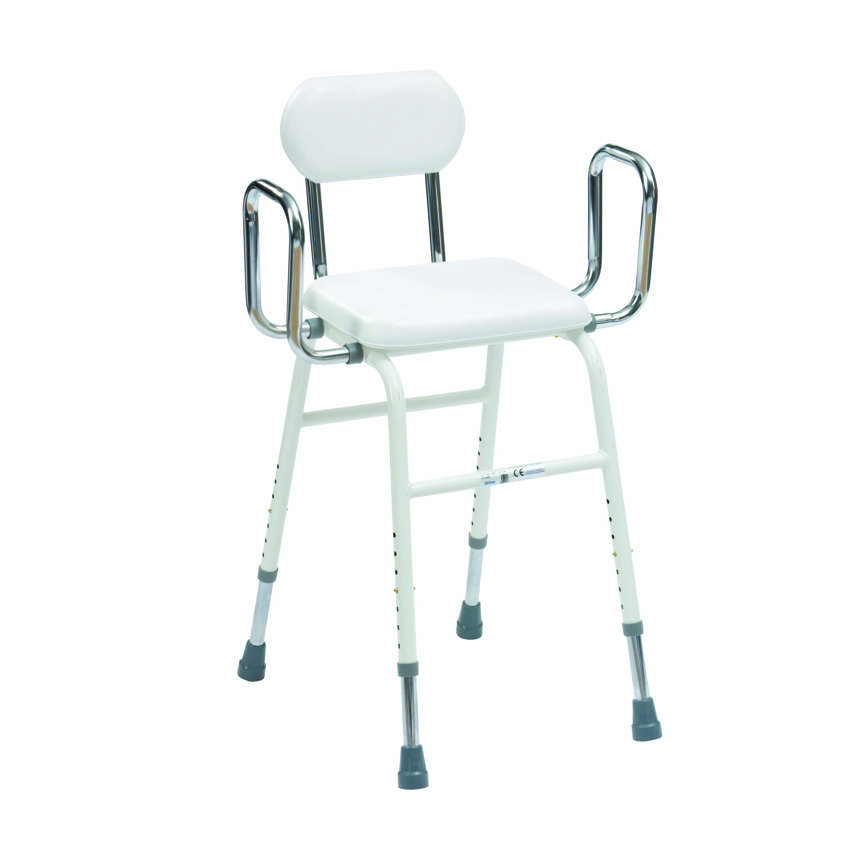
how to measure for perching stool?
To measure for a perching stool, you will need to consider the following factors:
- Seat height: The seat height should allow you to have your feet flat on the floor and your thighs parallel to the ground when you are seated. You can measure the distance from the ground to your hip joint to determine the appropriate seat height.
- Seat depth: The seat depth should allow you to sit all the way back in the seat with your backrest touching the back of the stool. You can measure the distance from the back of your knee to your buttocks to determine the appropriate seat depth.
- Backrest height: The backrest should support the natural curvature of your spine and reach the base of your shoulder blades. You can measure the distance from the top of your seat to the base of your shoulder blades to determine the appropriate backrest height.
- Armrest height: Armrests should be positioned so that your arms are relaxed and your shoulders are relaxed when you are seated. You can measure the distance from the top of your seat to the bend in your elbow to determine the appropriate armrest height.
- Overall width: The overall width of the stool should allow you to sit comfortably with enough room to move your legs and feet. You can measure the distance from the outside of one hip to the other to determine the appropriate overall width.
It's important to note that these are general guidelines, and it's always a good idea to talk to our experts before purchasing it to ensure that it is comfortable and meets your needs.
Important factors to consider when shopping for a perching stool
- Purpose: What do you plan to use the perching stool for? Do you need it for work, leisure, or both?
- Adjustability: Look for a perching stool that is adjustable in height and has a sturdy base. This will allow you to find a comfortable seated position and ensure that the stool is stable.
- Material: Choose a perching stool made from durable materials such as metal or wood. Avoid stools made from cheap, flimsy materials as they may not be able to support your weight and may break easily.
- Comfort: Consider the seat cushion and backrest of the perching stool. Look for a seat cushion that is thick and comfortable and a backrest that provides adequate support.
- Size: Make sure the perching stool is the right size for you. It should be tall enough to allow your feet to rest flat on the ground while you're seated, and wide enough to provide a stable base.
- Price: Determine your budget and look for a perching stool that fits within it. Keep in mind that a higher price doesn't always equate to higher quality. Look for a stool that offers good value for money.
- User Weight Capacity: Be aware of the safe working load of the perching stool.
Why use a perching stool?
Perching stools are used in a variety of settings, including offices, hospitals, clinics, and other medical facilities. They may also be used by individuals who have mobility issues or other physical challenges that make it difficult to sit in a traditional chair. In general, perching stools are used to provide a comfortable and supportive seating option for people who need to sit for long periods of time. Some specific reasons why someone might use a perching stool include:
- To reduce pressure on the lower back and legs: Perching stools allow the user to sit in a semi-upright position, with their feet resting on a footrest and their upper body supported by a backrest. This can help to reduce pressure on the lower back and legs, making it more comfortable to sit for long periods of time.
- To improve posture: Perching stools can help to improve posture by encouraging the user to sit with a more upright spine, which can help to reduce strain on the neck and shoulders.
- To provide support for people with mobility issues: Perching stools can be helpful for people with mobility issues or other physical challenges that make it difficult to sit in a traditional chair. The sloping seat and footrest can provide additional support and make it easier to get in and out of the stool.
- To improve productivity: Perching stools can help to improve productivity by providing a comfortable and supportive seating option for people who need to sit for long periods of time. This can help to reduce fatigue and discomfort, allowing the user to focus on their work or other tasks.
Where to buy a perching stool?
If you are in need of a perching stool, you may want to consider visiting our Mobility Shop Perching Stools category page under Bathroom Aids. Here, you can browse through a selection of perching stools and potentially find one that meets your needs and preferences. The Mobility Shop is a reputable retailer, so you can feel confident in your purchase.
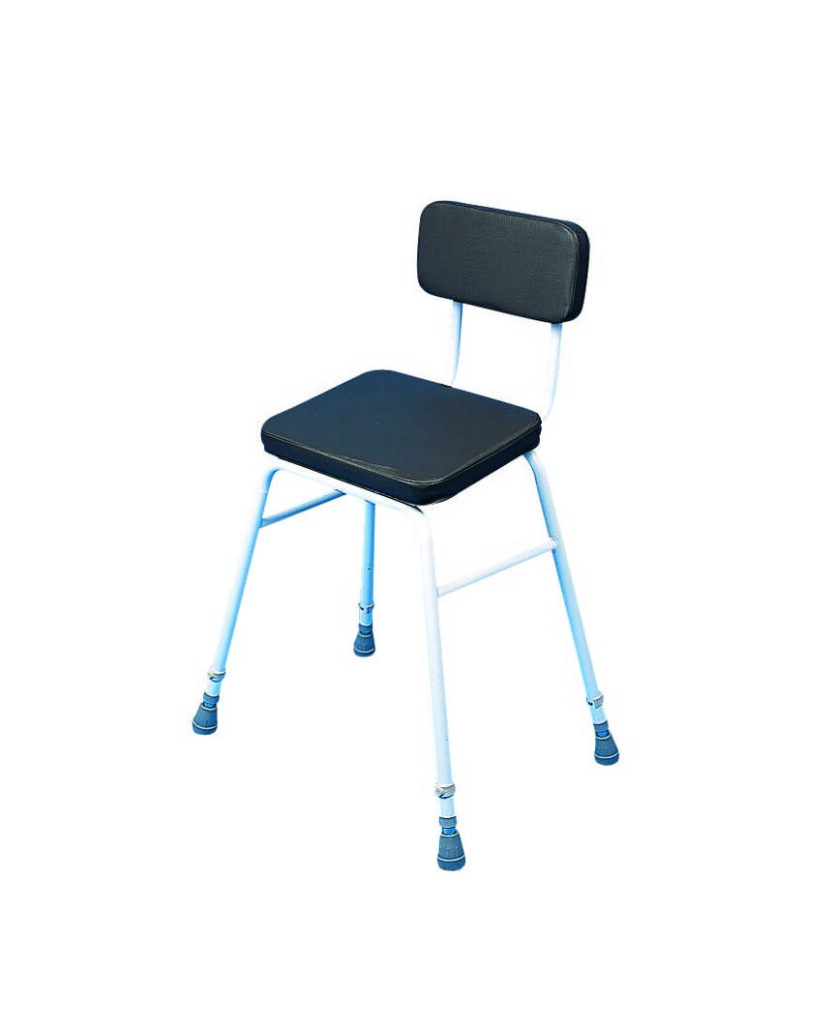
Can you use a perching stool in the shower?
Yes, you can use a perching stool in the shower. A perching stool is a type of shower seat that is designed to allow the user to perch on it rather than sit fully on it. It typically has a sloping seat and footrests to provide support and stability while showering. These stools are often used by people who have difficulty standing for long periods of time, such as those with mobility impairments or elderly individuals. They can be placed in the shower and used as a place to rest and support oneself while showering.
At Mobility Shop, we offer a wide selection of bathroom, kitchen, and household aids to help make daily life easier and safer. Our range of bathroom aids includes specialized products designed to help you bathe or shower with confidence. With the right bathroom aid, you can reduce the risk of accidents and injuries while using the bathroom. Explore our collection of bathroom aids to find the products that best meet your needs and preferences.
How to use a perching stool?
To use a perching stool, follow these steps:
- Place the stool in front of a work surface or counter that is at a comfortable height for you to work or sit at.
- Stand in front of the stool with your feet hip-width apart.
- Grasp the sides of the seat with your hands.
- Lift your feet off the ground and place them on the footrests.
- Adjust the height of the stool if necessary by using the seat's adjustment mechanism.
- Sit on the seat and place your feet on the footrests.
- Use the stool as you would a regular chair, taking breaks to stand up and stretch periodically.
Remember to use the stool safely and within its weight limit. Do not lean too far forward or backwards, as this can cause the stool to tip over. Also, be sure to sit up straight and use proper posture while using the stool.
Perching Stool Disability
Perching stools can be a useful tool for people with disabilities that affect their ability to sit for long periods of time or that make it difficult for them to get up and down from a traditional chair. Perching stools allow users to sit at a comfortable height while still providing support for their feet and lower legs. This can help reduce strain on the back and improve circulation.
If you are using a perching stool because of a disability, it is important to choose a stool that is suitable for your needs. Look for a stool with a comfortable, supportive seat and backrest, as well as footrests that are the appropriate height for you. You may also want to consider a stool with an adjustable height feature, which can help you find the most comfortable and supportive position.
Remember to use the stool safely and within its weight limit, and take breaks to stand up and stretch periodically. If you have any concerns about using a perching stool, consult with your healthcare provider or a physical therapist. They can help you determine if a perching stool is appropriate for your needs and provide guidance on how to use it safely and effectively.
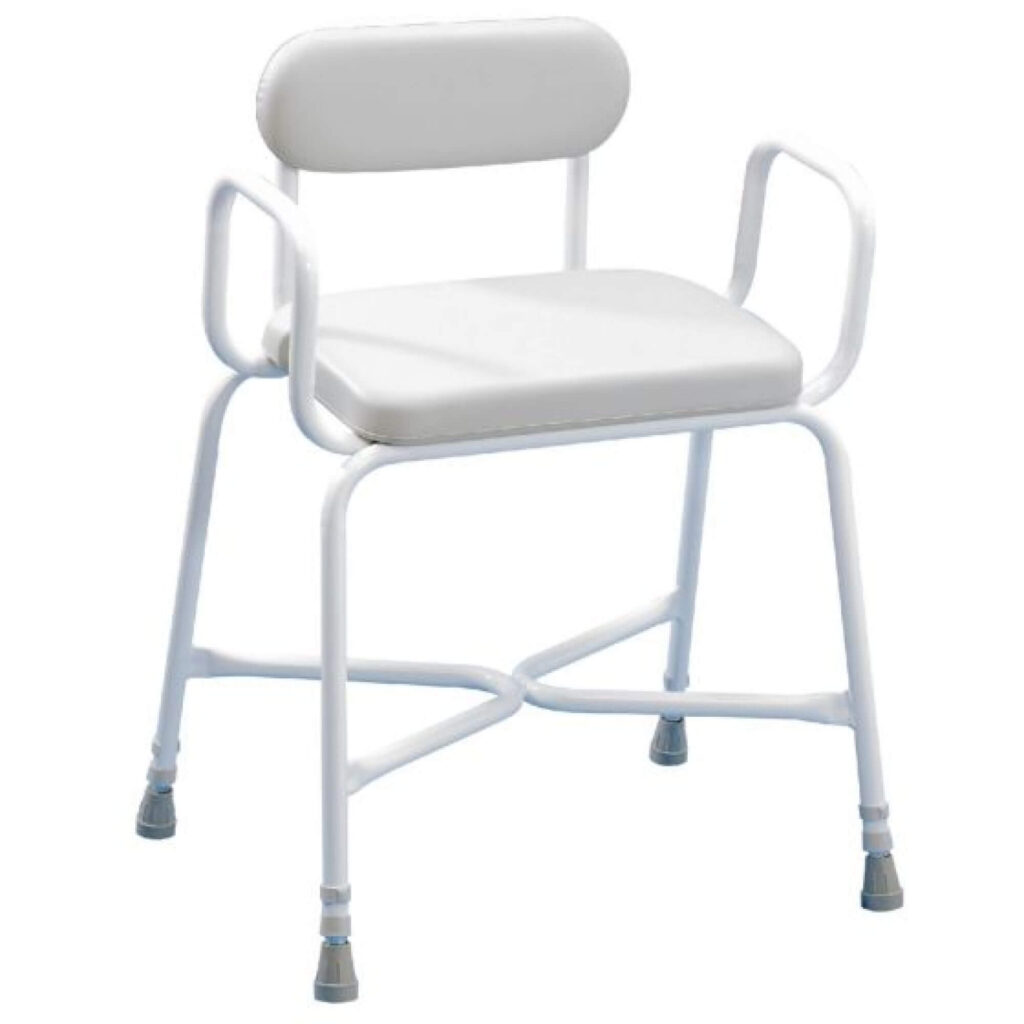
Perching Stool Safety
Different perching stools are available from various brands, and each may have its own unique design. To ensure safe and proper use, it is important to read the instructions or manual before using your stool. The manual will provide important information on how to adjust the stool, clean it properly, and identify the types of surfaces it can be used on without tipping over. Failure to follow these instructions can result in accidents or injuries. Take the time to read and understand the manual to make sure you know how to use your perching stool safely. Here are some safety tips to follow when using a perching stool:
- Make sure the stool is set up on a stable and level surface.
- Use the stool within its weight limit.
- Do not lean too far forward or backwards, as this can cause the stool to tip over.
- Sit up straight and use proper posture while using the stool.
- Take breaks to stand up and stretch periodically.
- If the stool has wheels, make sure they are locked in place before using it.
- Do not use the stool for activities for which it is not intended, such as standing on the seat or using it as a ladder.
- If the stool has an adjustable height feature, make sure it is properly secured before sitting on it.
- Inspect the stool regularly for any damage or wear and tear, and repair or replace it as needed.
Following these safety guidelines will help you use your perching stool safely and comfortably. You can also read NHS Document for precautions.
Are you having difficulty finding the perfect perching stool? Let our Mobility Shop expert help. Call 0800 0855 595 for personalized assistance in selecting the right option for your needs. You can explore our perching stool category page under bathroom aids.


